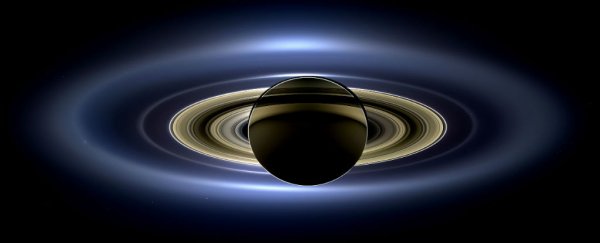When researchers talk about planets and moons forming, it's usually an event that took place billions and billions of years ago - a timeframe that's so massive, it's hard for us to really comprehend. But that can no longer be said about Saturn's famous moons and rings, because they might have formed a mere 100 million years ago, which makes them younger than most dinosaurs.
According to researchers from the Search for Extra-terrestrial Intelligence Institute (SETI), a new computer model shows evidence that Saturn's inner moons and rings are actually a relatively modern creation, especially considering that Saturn itself, along with the other planets in our Solar System, formed some 4.5 billion years ago.
The discovery came from analysing orbital data from the planet's moons. Basically, since Saturn has so many moons flying around it, they have to share space, which means that the orbits of these moons are affected by each other. As time goes on, these orbits stretch out and grow.
So, based on that logic, the younger moons should have different, more ordinary orbits than the older moons, if they actually had billions of years to get weird. As SETI puts it:
"By comparing present orbital tilts and those predicted by computer simulations, the researchers could learn how much the orbits of Saturn's moons grew. It turns out that for some of the most important satellites - Tethys, Dione, and Rhea - the orbits are less dramatically altered than previously thought."
With that observation, the researchers used data from NASA's Cassini mission data to create simulations.
When all was said and done, the team found that many of Saturn's moons - except the faraway ones like Titan - likely formed 100 million years ago, meaning that many of Saturn's moons formed during Earth's Cretaceous Period, the era during which many of your favourite dinosaurs were alive.
It's hoped that the findings will help us judge the ages of other moons inside our Solar System and out.
It's pretty crazy to think that moons were forming in our Solar System during a time on Earth that many of us can actually envision. It's still a super-long time ago, but, cosmically speaking, it's like it only happened yesterday.
You can read the full research article in the Astrophysical Journal.
